Camping and hiking at Lake O’Hara in Yoho National Park, BC
Fresh off the plane from our recent trip to Ecuador, the next stop on the Year of the Adventure was the Canadian Rockies, fast becoming our second favourite outdoor destination in the world (right after our beautiful home on the west coast of British Colombia, of course). After lots of splurges in the food department in South America, and much less exercise than expected, we decided to start with what we termed ‘bootcamp’: three days of hiking and camping at Lake O’Hara, in Yoho National Park, to whip us back into shape for the long days of summer in the mountains.
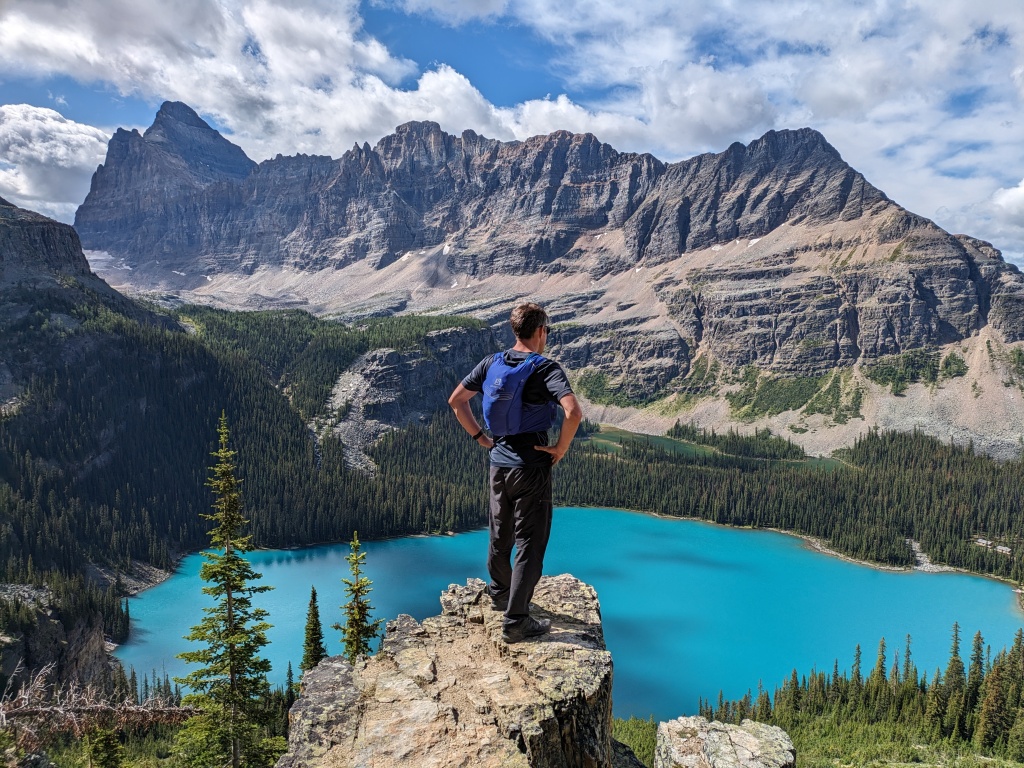
Logistics
-Lake O’Hara is in Yoho National Park on the BC side of Canadian Rockies, directly west of Lake Louise. Access to the area is via Highway 1, about 15 minutes east of the small town of Field. A large gravel parking area sits just off the highway. Note that a national parks pass is required to be displayed in your vehicle (this can be purchased at the parks visitor centre in Field).
-The hiking area itself is somewhat tricky to access: a shuttle (advance reservation required) is needed to cover the 11 km road to the lake. Alternatively, you are free to park in the lot and hike up and down the road, but it’s a loooong walk, and it’s not flat either.
-There are three places to stay at Lake O’Hara: the campground, the Elizabeth Parker hut (operated by the Alpine Club of Canada), and the Lake O’Hara Lodge. As ACC hut reservations operate on a notoriously difficult lottery system, and the lodge is insanely expensive ($1200/night for a lakeshore cabin), camping is usually your best bet, although snagging a spot is a bit of dice roll as well.
-Campground reservations open sometime in the spring, and are booked up almost immediately. To stand a chance of getting a site, you must sign on before 7am on the day sites are released (watch the Parks Canada website for the date) in order to be randomly assigned a spot in the booking queue – if you’re lucky, your randomly assigned queue number will be far enough forward in the line that you’ll be able to book some nights. Your best bet is to have the rest of your camping party also sign on for more chances, and prepare to be flexible in your selected days.
-Campsite reservations include a shuttle reservation. You’ll be assigned a morning pick-up time when you book, and there are numerous shuttle options throughout the day on your return trip.
-In terms of hiking and camping gear, each person is allowed one large bag, or two small bags, on the shuttle (although we noted that many folks threw a huge bag in the back and kept a day-bag with them on the bus, and they were fine with that). While you can splurge a bit on weight since there’s no hike into camp, this still necessitates packing like a backpacking trip. Note that no hard-sided coolers are allowed, nor camp chairs.
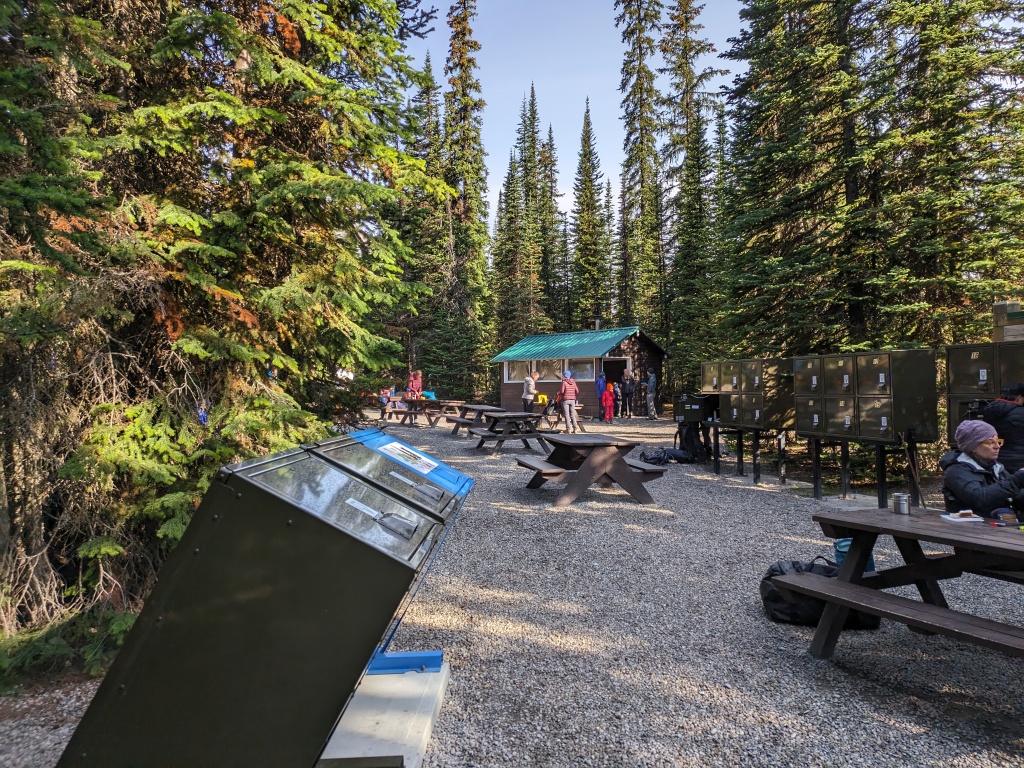
-The campground has a maximum 3 night stay. While it’s not exactly serviced, it does have a rather nice outhouse, a sink for dishwashing, drinking water, bear lockers for each tent site, a large communal firepit and plenty of firewood, two small warming/cooking shelters with mini-woodstoves, lots of picnic tables in cooking area, and even a little shed in which to leave your camping gear on the day you’re scheduled to leave (if you want to hike prior to grabbing the shuttle).
-In addition to the campsite, there’s a day-use shelter/shop about 400 m from the campground across from the Lodge named “Le Relais”. This shop sells coffee, tea, cold drinks, ice cream, some small snacks, chocolate, and its signature carrot cake, which came strongly recommended. A huge slice with cream cheese frosting was ours for $6, but we had to check back a couple of times for it, as they do sell out somewhat quickly. Note that Le Relais is cash only.
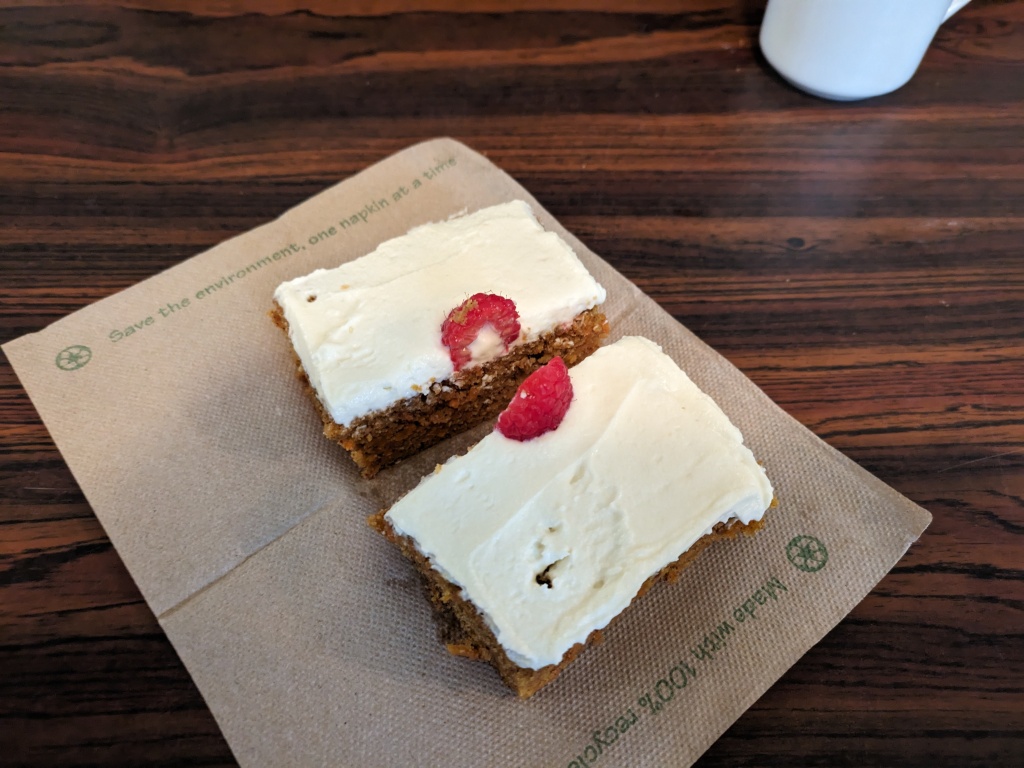
-In terms of packing, Lake O’Hara campground is pretty high, somewhere around 2000 meters. It’s also located in the Rockies, with notoriously fickle weather. Pack for all conditions, and bring some warm layers as it can get quite chilly in the mountains at night, even if the days are hot.
In addition to its famous lake, the Lake O’Hara area also features tons of hiking trails, climbing routes, and even dozens of other alpine lakes. Here are a few of things we got up to during our three day trip.
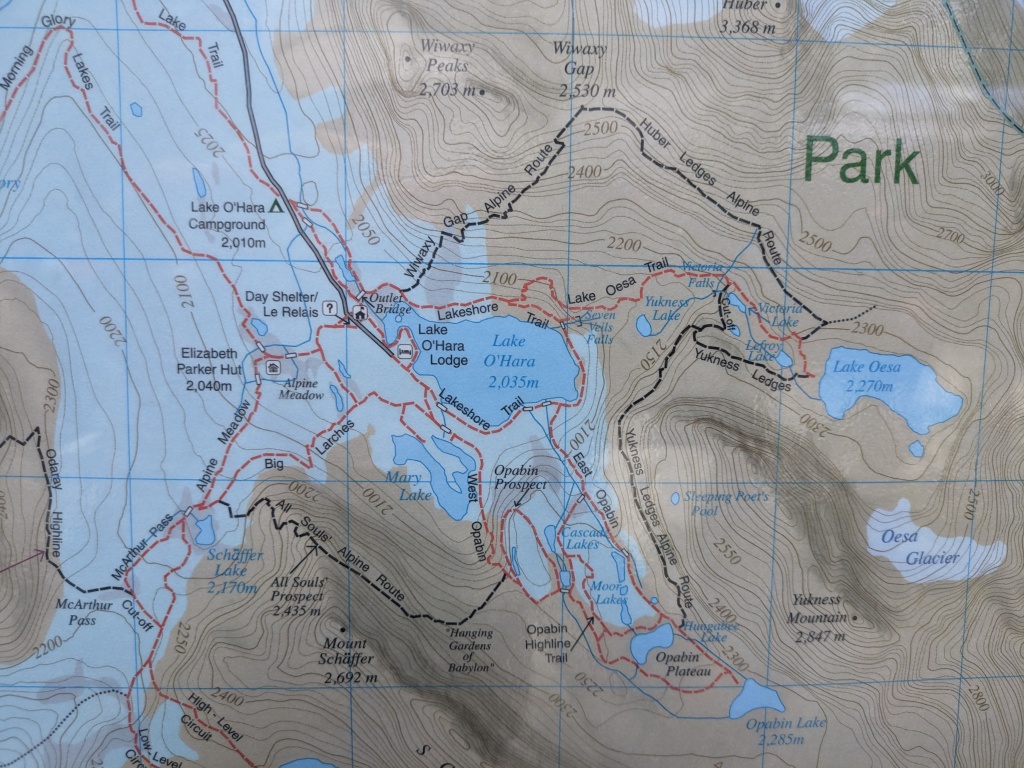
Mt Schaffer
-Mt Schaffer is a relaxed scramble located just off the All Souls Alpine Traverse hiking trail. It’s mostly 2nd/3rd class with a couple rock steps – the hardest of these short steps has a few moves up to 5.4.
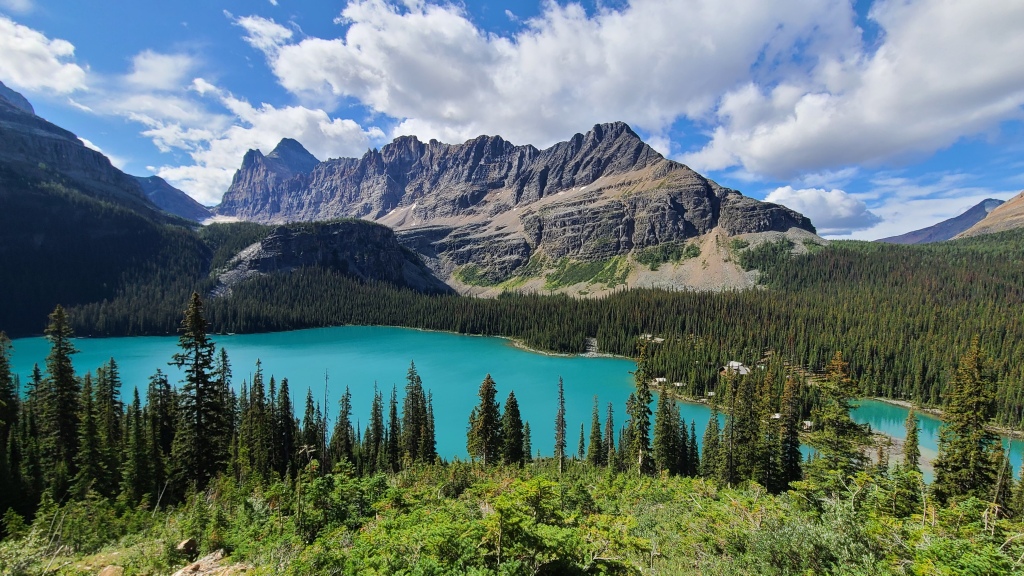
-To access, follow the established hiking trail to the All Souls Alpine route. Hike to highest point, then you’ll see a cairn and footpath leading up the north ridge of Schaffer. Generally stay on top of the ridge to the summit, picking the path of least resistance. There’s even a light footpath for much of the route, so route finding is quite straightforward. Once you reach the top of the ridge, traverse climber’s left to the true summit.
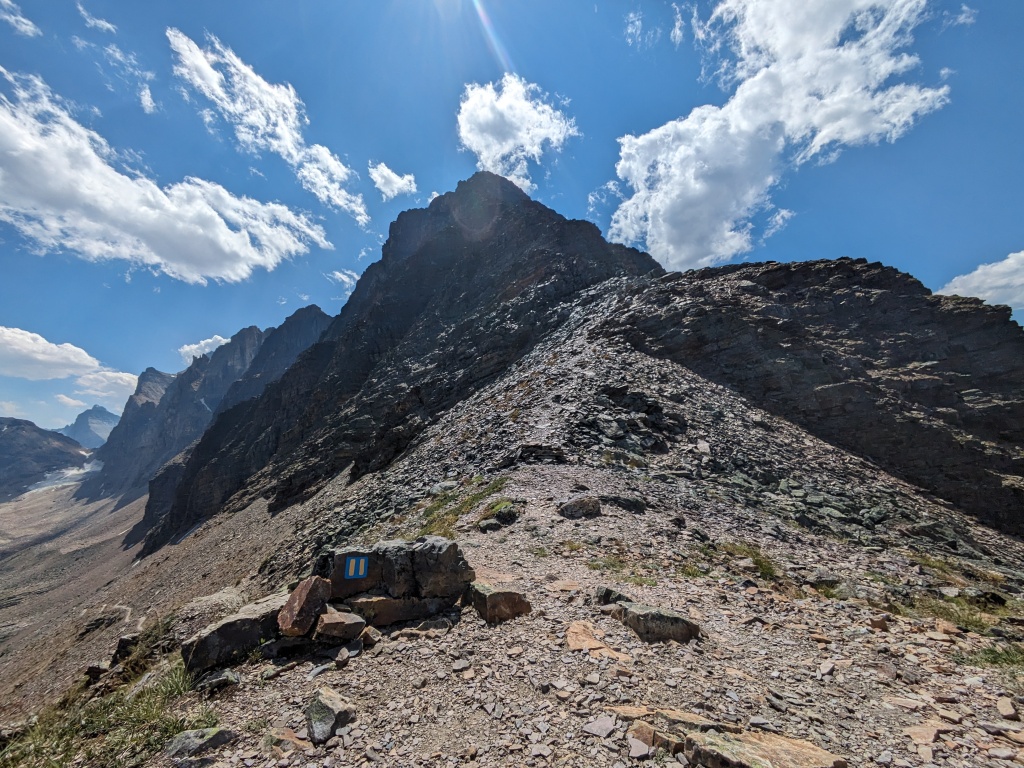
-The crux of the scramble is midway up the ridge – a rock step with a couple 5.4 moves, marked by someone’s stuck nut in a crack (note there’s a big ledge right below the step, so it won’t feel exposed or airy). You can bypass this if you want by traversing a small ledge climber’s left, then climbing the loose gully for a few meters until you can traverse right again to get back on the ridge.
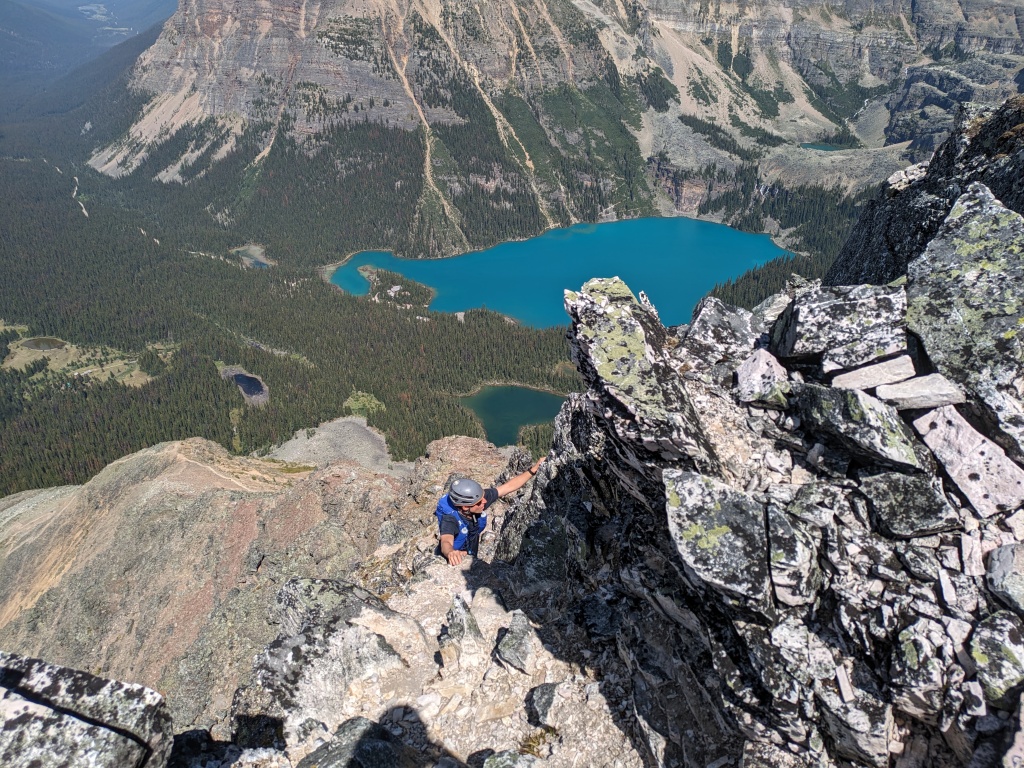
-Despite the 5.4 grade, you don’t a rope or rack (unless you’re a particularly nervous scrambler), as the handful of harder moves can be bypassed, and don’t feature any serious exposure (ie: there’s always a big ledge below). Helmets are always a good idea however.
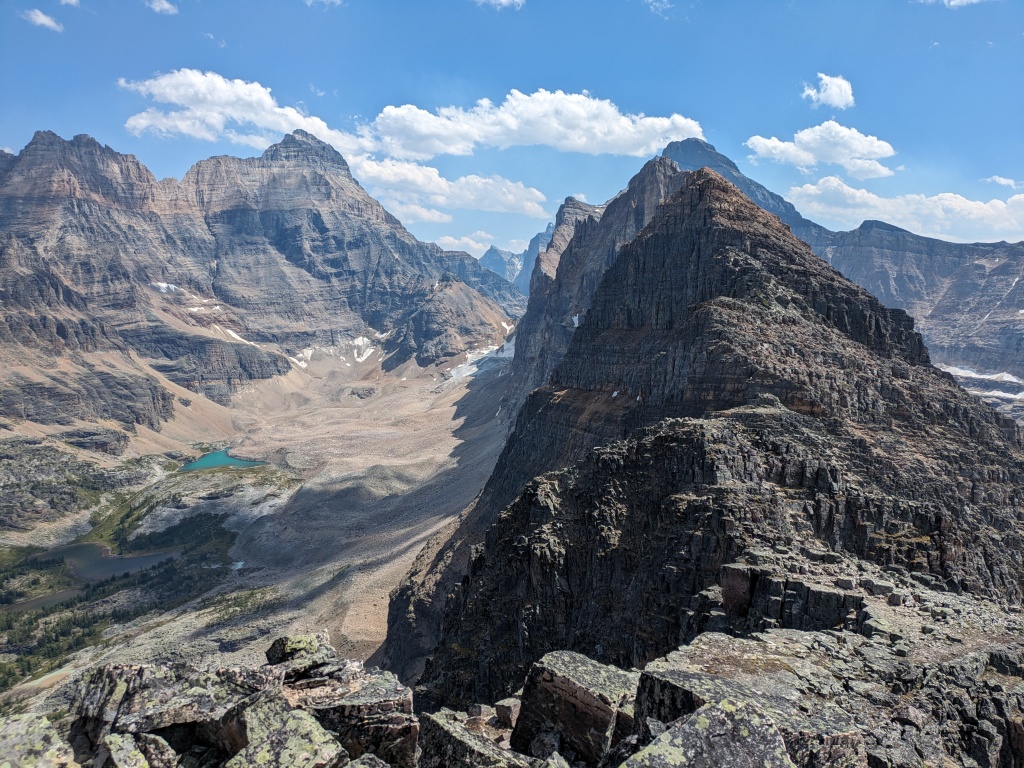
-Descent is down the south ridge, which is even easier than the ascent route. Simply follow the ridge back down towards McArthur Lake, then connect with the lake hiking trails to get back to the campground/hut.
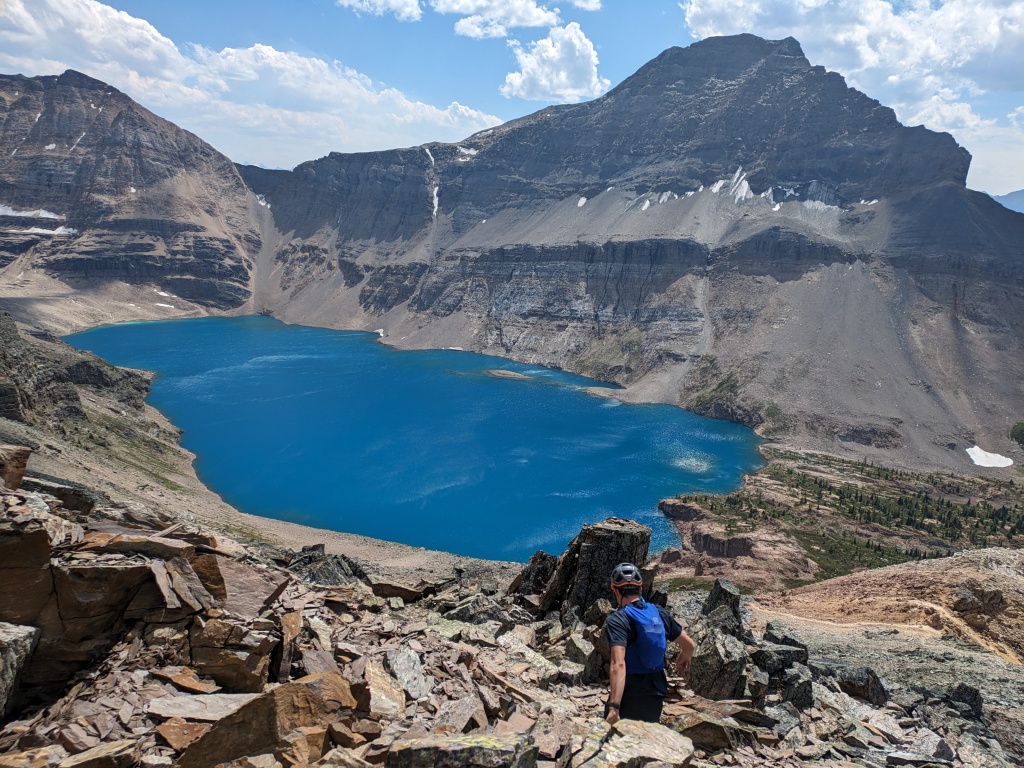
-Mt Schaffer is a short objective from the campground, about 4 hours camp to camp. It’s very enjoyable and low stress, with great views, almost no route-finding, and easy scrambling on decent rock. We logged about 8 km and 725 meters gain.
Alpine Circuit
-The Alpine Circuit is a traverse of Lake O’Hara and many other alpine lakes, including Lake Oesa and Opabin Lake, via the surrounding mountain ledge systems. Nearly every minute of this trail has stunning views, making it well worth the effort.
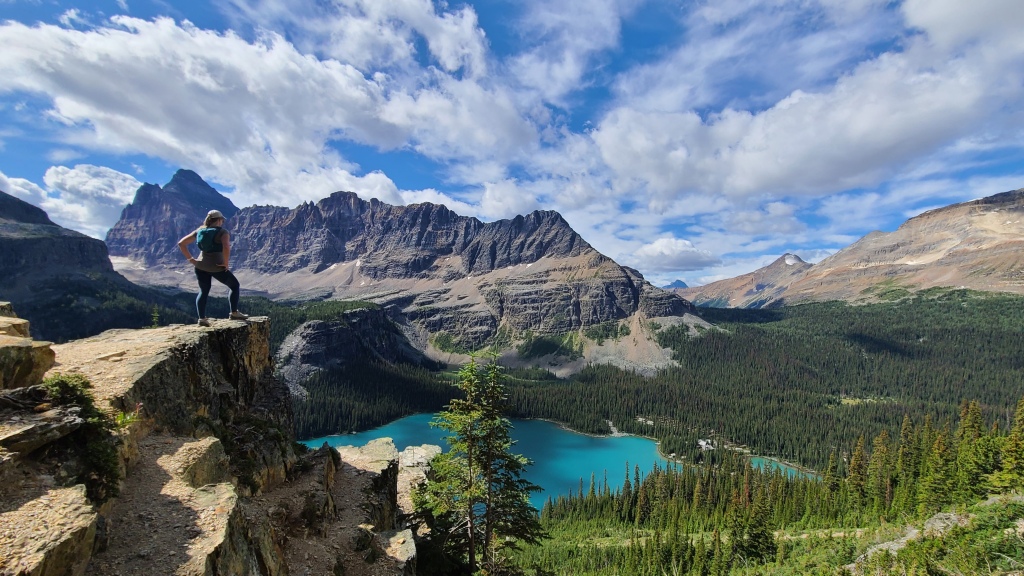
-This is a popular hiking trail. It’s well-marked with signposts, and in more alpine/rocky sections, a blue and yellow symbol painted on the rocks makes it easy to stay on track.
-The circuit is long if you do the whole thing, but there’s dozens of trails in the area to shorten as needed. We logged about 15 km for the whole circuit, with 1100 meters of elevation gain over 6 hours. The circuit can be completed in either the clockwise or counterclockwise direction (but we heard that clockwise is better).
-The trail starts with a walk by Lake O’Hara to the junction for the Alpine Circuit, then dives into a very steep climb up to the Wiwaxy Gap. From here, traverse the Huber Ledges, then descend down to Lake Oesa. We stopped here for lunch, and hopped some rivers to explore around the far side of the lake to see Abbott Pass. (There used to an ACC hut at the top of the pass for mountaineering objectives such as Mt Victoria and Mt Lefroy, but it was decommissioned and dismantled recently, as it was no longer structurally sound. Nothing was left for us to see.)
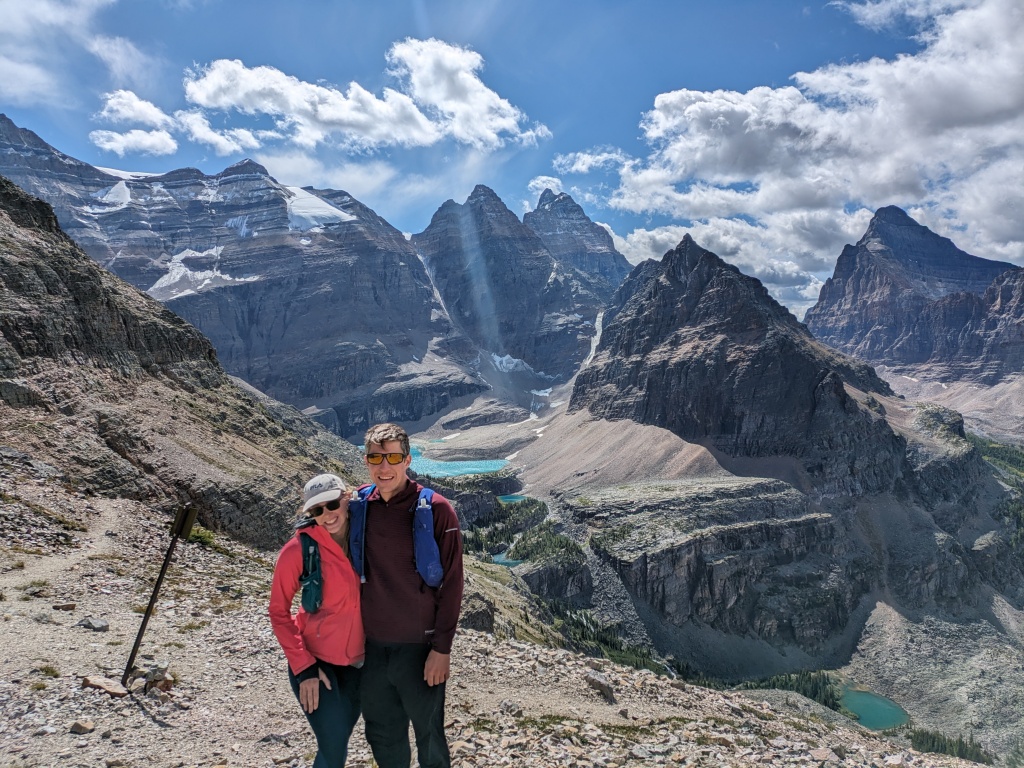
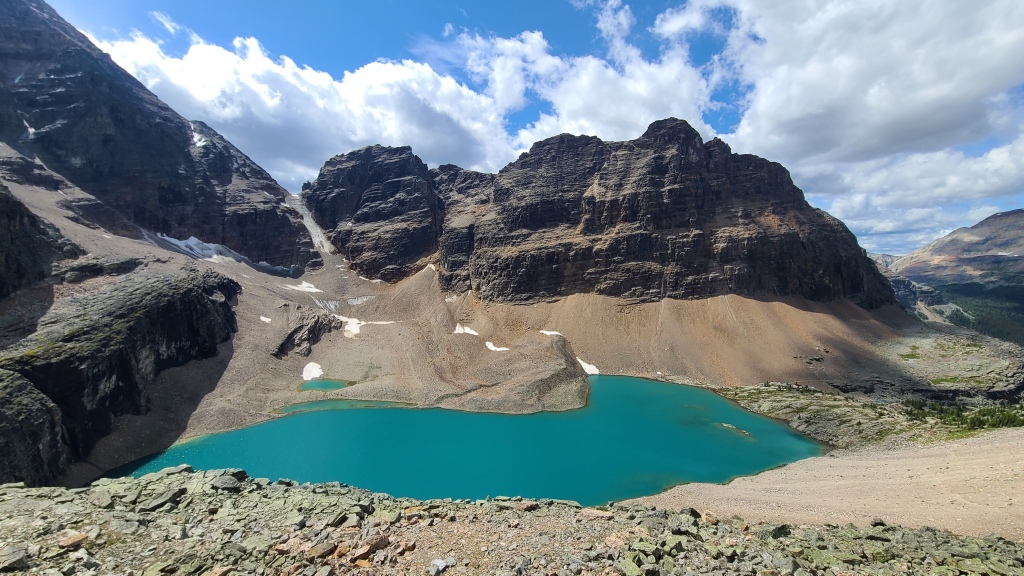
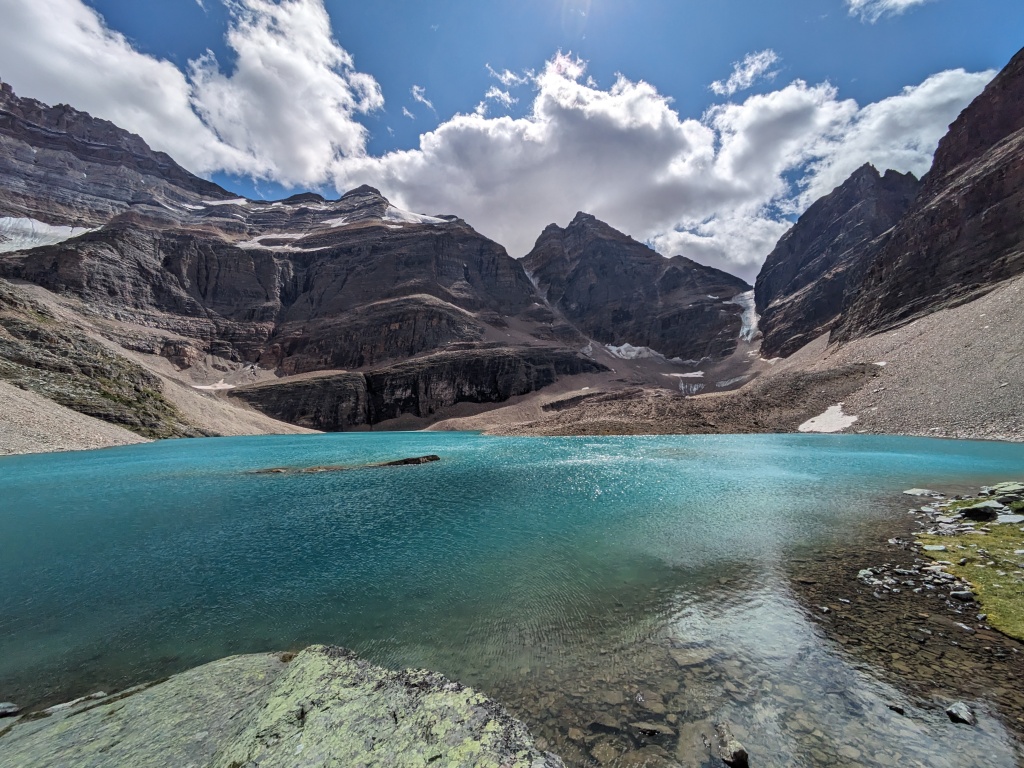
-From Oesa, continue past a series of small lakes with waterfalls, including Victoria Falls, and keep traversing high above Lake O’Hara along the Yukness Ledges alpine route.
-Next, you’ll descend from Yukness into Opabin plateau, a wide grassland littered with more lakes, ending at Opabin lake and Mt Hungabee. From here, a gentle cross-country trek down the plateau takes you to the final climb up the All Souls trail to the north ridge of Mt Schaffer.
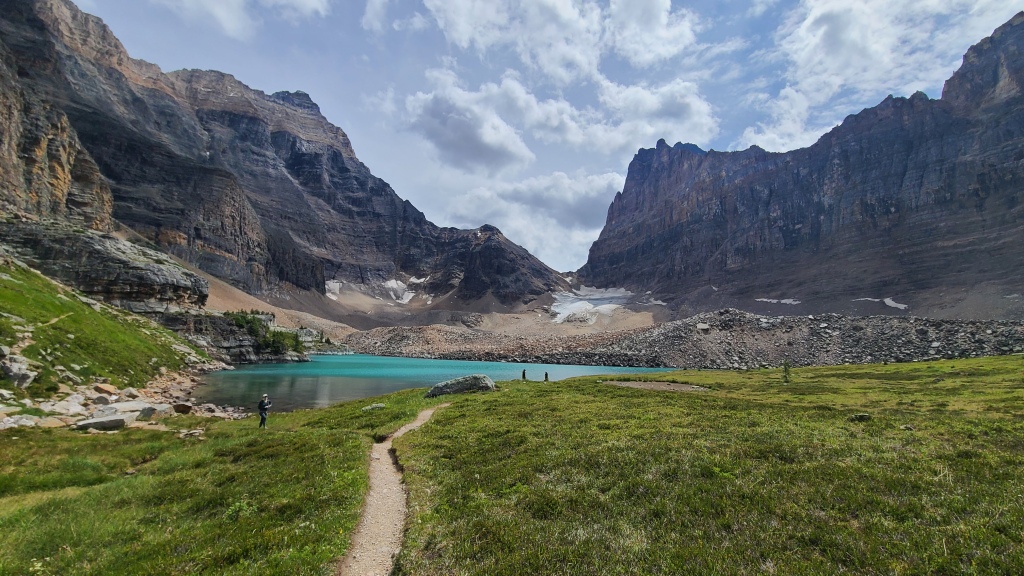
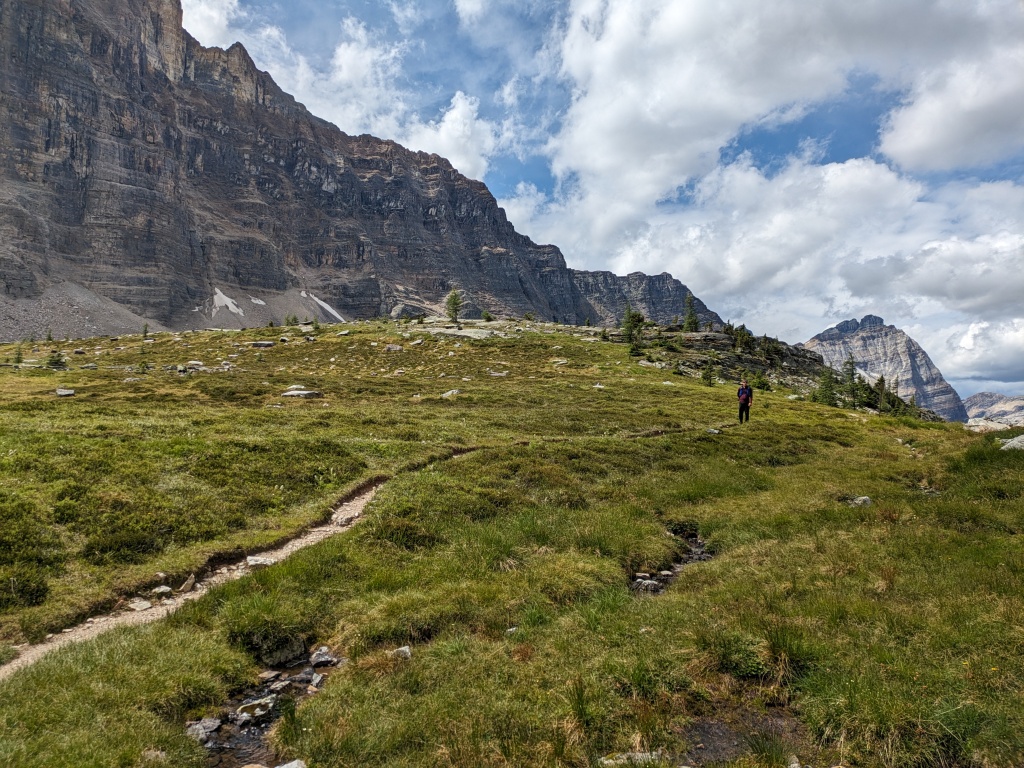
-From the high point on Schaffer, a steep descent leads back down to the valley, then follows gentle trails out around the west side of Lake O’Hara and back to the campsite.
Linda Lake Circuit
-The Linda Lake Circuit is an easy forest hike, leading through Morning Glory Lake to Linda Lake. You’ll spend more time in the trees here than on other trails, but there are some lovely views of glacial valleys along the way.
-We did the circuit in about 4 hours, and logged 9 km of distance and 300 meters of gain.
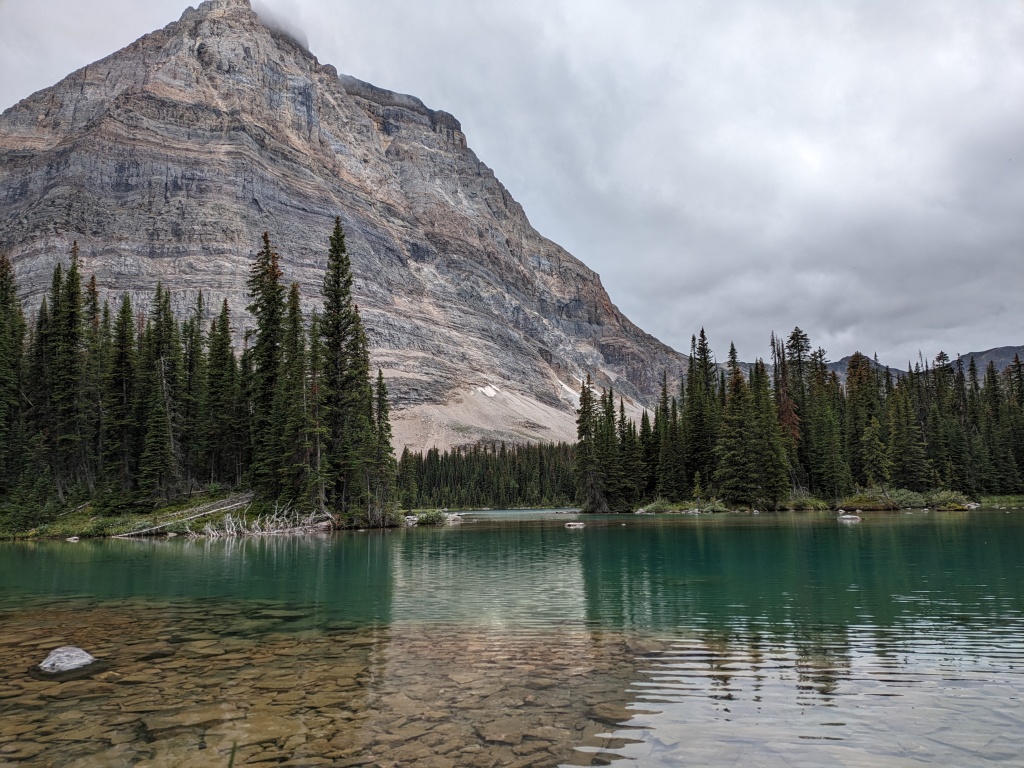
Lake O’Hara Shoreline Trail
-The Lake O’Hara Shoreline takes you on a gentle walk around Lake O’Hara. It’s 2.8 km, with negligible elevation gain (just some minor ups and downs). This is an easy walk on a well-marked path, with some perfect photo-stops along the way.
-A short detour up a hill at the far end of the lake leads to Seven Veils Falls, a beautiful spot to stop and relax.
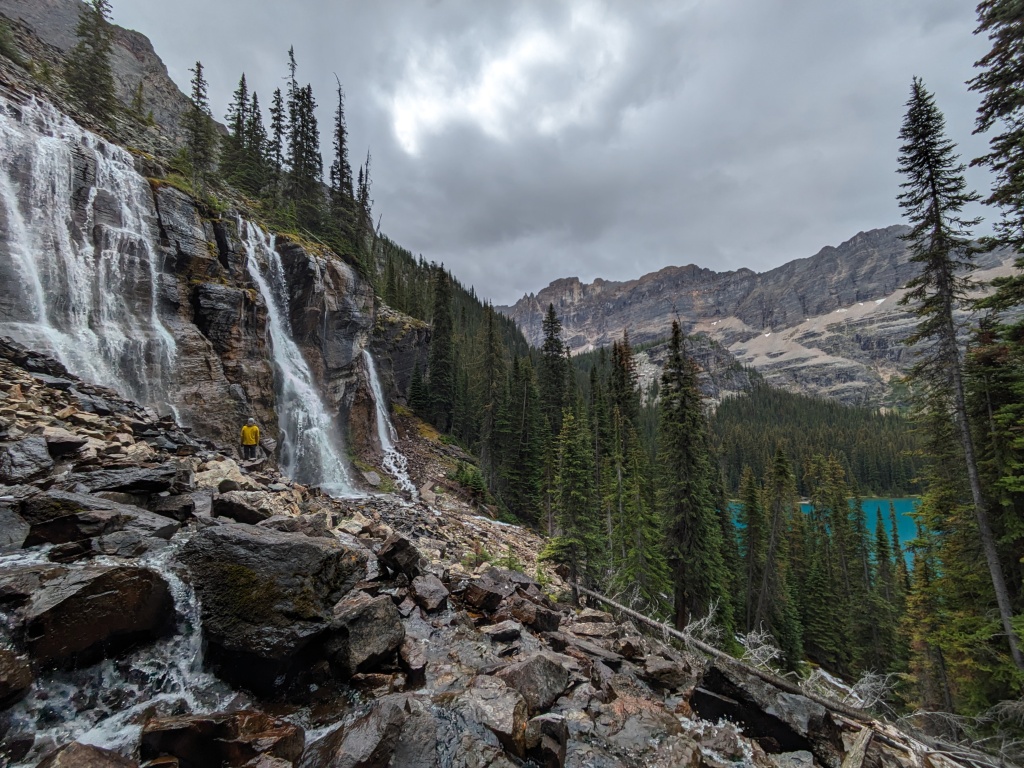
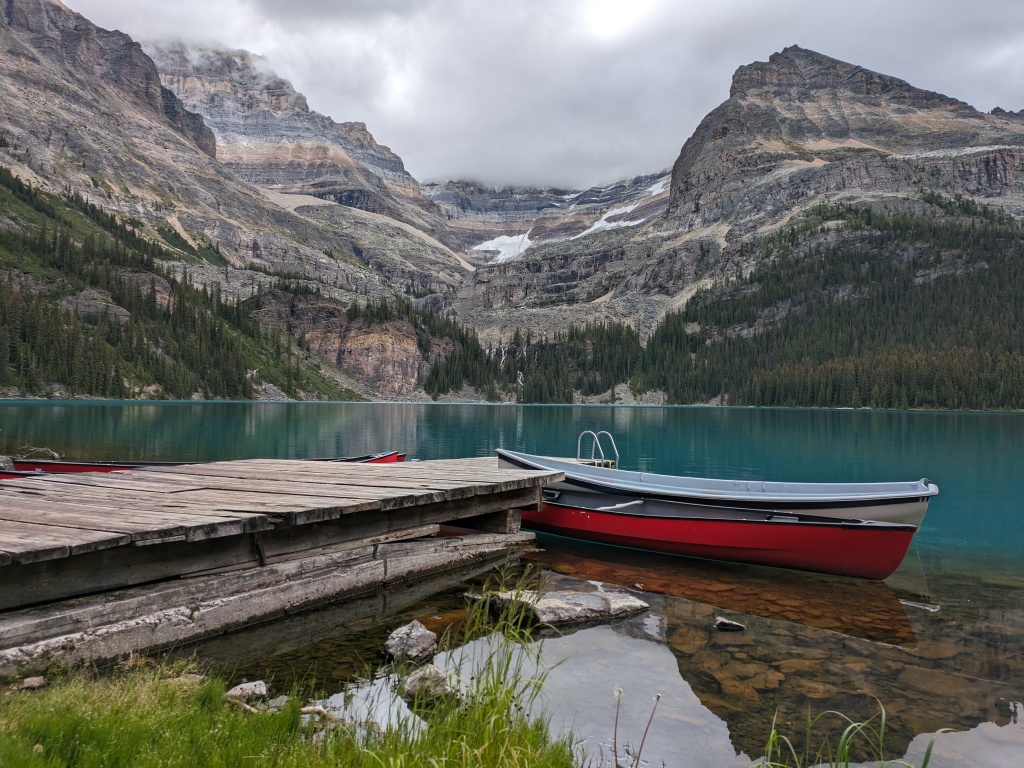
Lake O’Hara was one of my favourite places I’ve been in the Rockies. The variety of coloured lakes and the dramatic beauty of the steep, layered Rockies peaks was truly unique. This area features so many trails and climbs; some notable alpine objectives we didn’t get around to were the Wiwaxy Peak scramble, the Watchtower rock climb, and Mt Huber, Mt Hungabee, and Mt Yukness mountaineering routes, but days could also be spent exploring the hiking trails in the many valleys and plateaus. Truly world class, and worth a visit!

what a hike!!! Stunning views!
LikeLike
I just can’t get over the colours up there! 🙂 Thanks for reading!
LikeLiked by 1 person